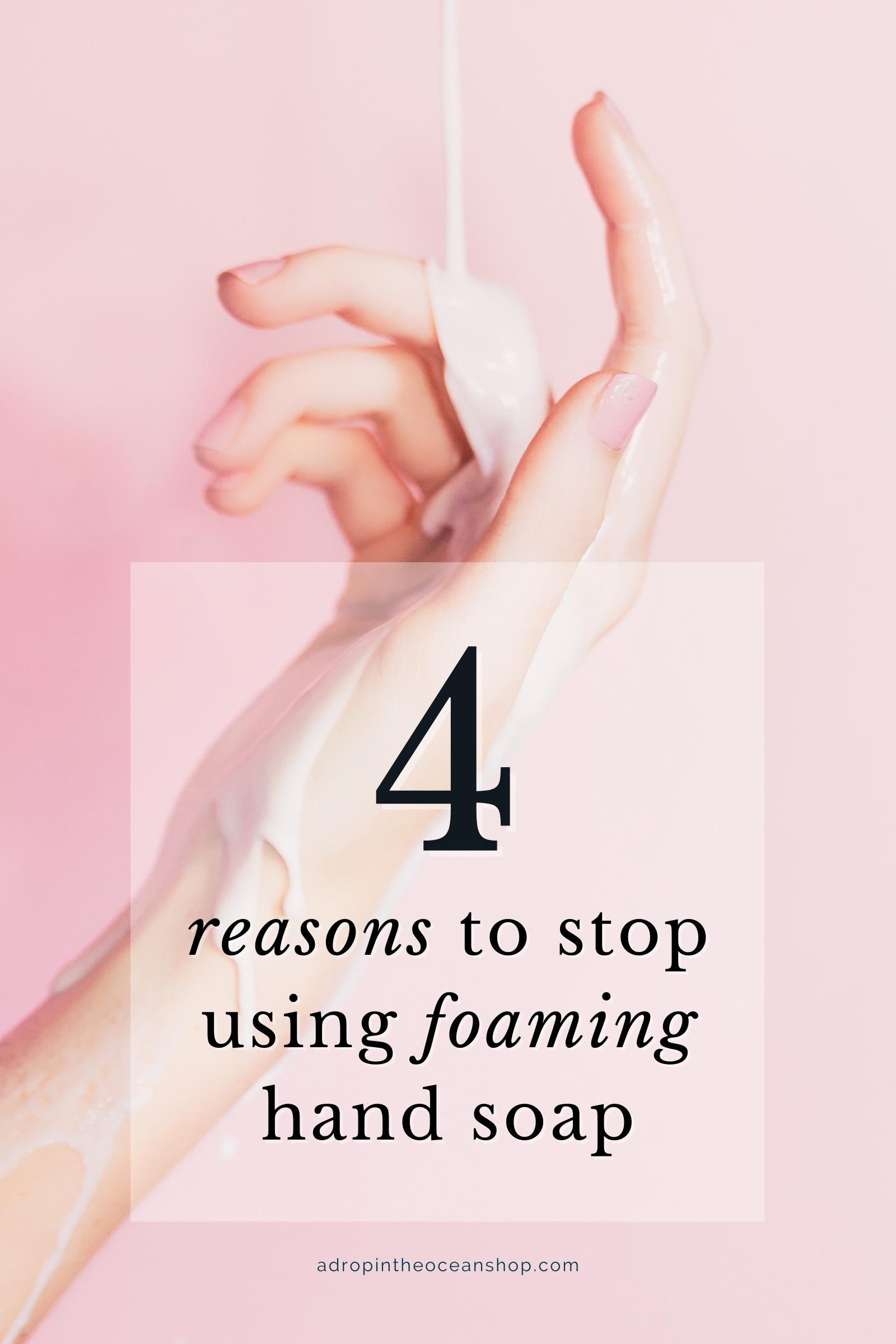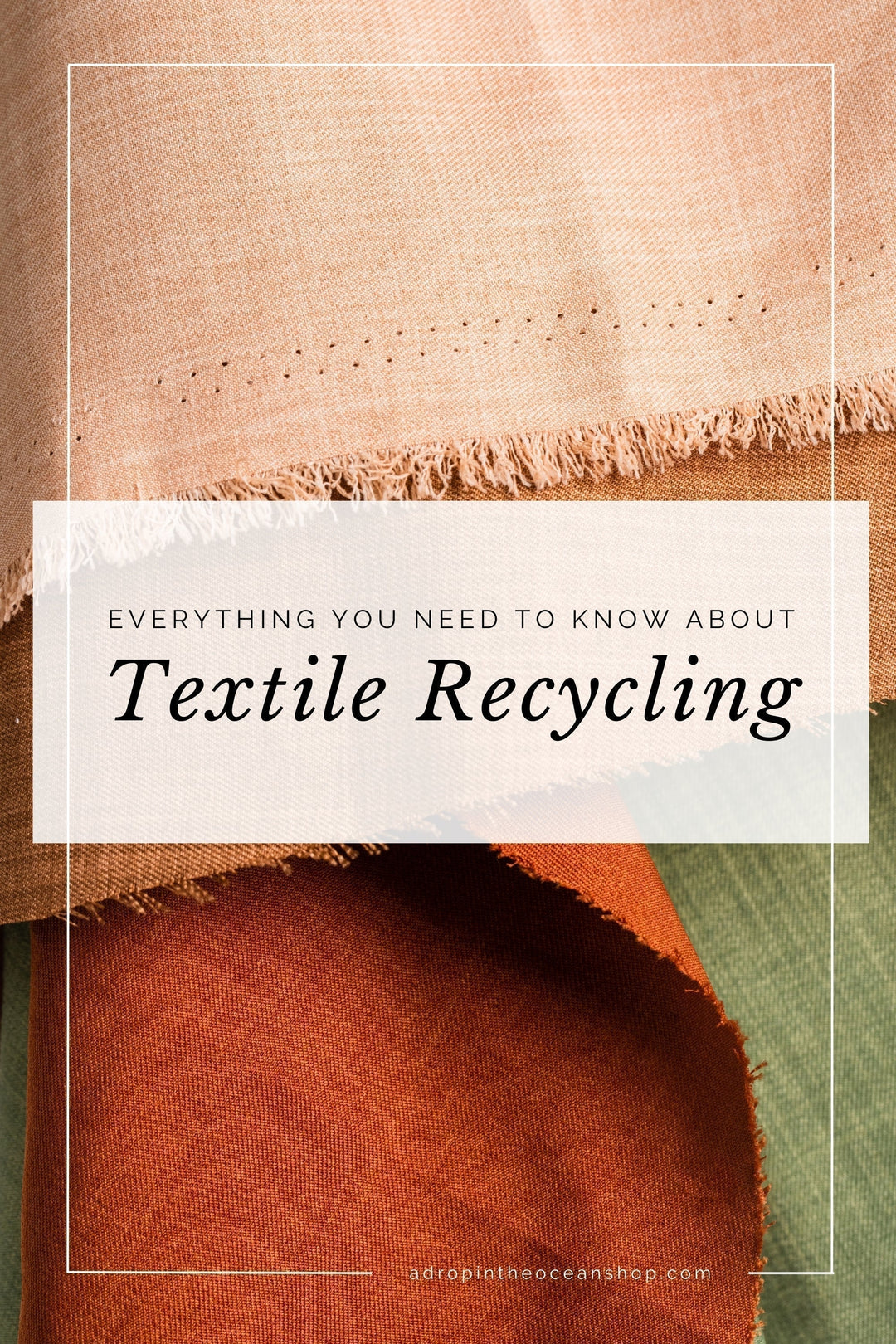4 Reasons to Stop Buying Foaming Hand Soap

This post first appeared in our weekly Make Waves Mondays email series on August 29, 2022.
Hey friend! This week’s topic is one that I’ve been sitting on for probably a year now, always feeling like it “wasn’t quite the right time to share it.” I’m not really sure why I’ve been feeling that way, but hey that’s just how my brain works sometimes 🤷♀️
But after focusing the last two weeks on bar soaps, how great they are and how to take care of them, I’m thinking this week is the perfect week to finally share this ~hot take~ I’ve been keeping close to the chest.
Ya ready for it?
Foaming hand soap is a waste of your money.
Yep, I said it.
I know it’s oh-so-loved, but it’s just not worth your money. Here’s why.
What makes a hand soap foamy?
Here’s the secret most companies won’t tell you. Foaming hand soap isn’t foamy because of the soap. It’s foamy because of the pump.
Foaming hand soap is a diluted version of liquid hand soap that must go through a special foaming pump that adds air into the mix to create an already-sudsy hand soap “lather” when it’s dispensed onto your hands.
There’s not actually anything special about foaming hand soap except that it’s watered down.
(So why is foaming hand soap so much more expensive? #ManufacturedDemand)
Is foaming hand soap more effective than liquid?
I think part of the reason we love foaming hand soap so much is because we feel like our hands are getting cleaner because our brains associate foaminess with cleanliness.
In fact, most lather in everyday home and personal care products was created artificially as a result of customer demand.
But the reality is, lather has nothing to do with effectiveness.
Several studies in the past few years have shown that foaming hand soap is actually less effective with regards to decreasing bacteria on our hands (check out this one, and this one, and this one). Now, there aren’t a ton of studies on this and, like all peer-reviewed studies, there’s always room for new studies and evaluations.
But so far, the general consensus seems to be that foaming hand soap is less effective than liquid. However - this could be at least partially due to the fact that people tend to wash their hands for a shorter amount of time when they use foaming hand soap versus liquid.
If we’ve learned anything from the covid-years, it’s that the amount of time spent washing is actually really important to keep us healthy.

Is foaming hand soap more sustainable than liquid?
Overall, it doesn’t look like foaming hand soap is any more sustainable than liquid hand soap.
From the studies and articles I’m seeing, the only thing that might make foaming hand soap more eco-friendly is that people are using less water when they’re washing their hands because they’re not washing their hands as long as with liquid.
So, you’re using watered-down soap, less effectively, but in the process accidentally using less water....... Soooo I’ll leave that one up to you, my friend.
How can we make foaming hand soap more effective, more sustainable, and more affordable?
Now if you’re reading this and you’re thinking, “Okay Krystina I get it, but I really freaking like my foaming hand soap! And so do my kids! And I won’t be able to convince my whole family to switch to something new. What can I do??” you know I’ve gotchu.
So first, if you’ve already got a foaming hand soap dispenser at home, first and foremost, stop buying new foaming hand soaps with dispensers. You don’t need a whole new bottle every time you run out!
(I mean, that is kinda the whole point of our refill shop… 😉)
You also don’t need to buy special “foaming hand soap” refills. While doing research for this post I was looking on Grove’s website at their hand soap options and was shocked to see that their “foaming hand soap refills” are more than twice as expensive than their regular “hand soap refills,” when we’ve just established that it’s nothing more than watered down hand soap. #themoreyouknow
Instead, keep your foaming hand soap dispenser, add some regular liquid hand soap to the bottle and fill it with water (about a 5 parts water to 1 part hand soap ratio). Give it a quick shake, and you’re good to go.
At that ratio, one of our 32oz hand soap refill bottles will refill a 12oz foaming hand soap bottle about 13 times - working out to be just about $3.60 a bottle.

And then, when you’re washing your hands, just make sure you’re still washing the recommended 20 seconds - and turn off the water while you’re at it!
You’ll get an effective wash and still save water and money.
And if you don’t already have a foaming bottle to refill, my go-to is Rail19. This isn’t a referral link and I don’t have any affiliation with them whatsoever, I just really love their bottles, and their foaming pumps are be-u-ti-ful metal pumps 😍
Okay now I really wanna know, friend - did you already know about this trick for foaming hand soap or is this all new to you?? Comment below and let me know!
Related:
How "Closed Loop" is Becoming a Greenwashing Term
How to Use Hand Soap Powder: Step-by-Step Guide
What is PVA and is it sustainable?
Why You Should Switch to a Natural Laundry Detergent









Never knew this, but googled it and wow!
Good handwriting practice and save water:-
1. TAP ON, wet hands, TAP OFF
2. SOAP ON, wash hands
3. TAP ON, rinse hands thoroughly, TAP OFF
4. 2 paper towels only, not scrunching 6
saves paper 🤗
Can you please do a review of or share your thoughts on Blueland? I know someone else asked in a comment section. I’d love to see your full review!
I use Dr bronners no scent Castile soap in a foam dispenser. I put tea tree oil in it to help fight bacteria. There are to things I really enjoy about foam rather than liquid soap is that one, it’s less messy and two, I waste less because a little goes a long way. After using liquid soap for years I now much prefer the foaming soap method. I believe it comes down to personal choice, it’s not rocket science it’s just personal preference. 🙂
I saw a tic tok clip on how to refill your dawn dish liquid foaming soap spray. Use 2oz of dawn regular liquid with 20 drops of alcohol along with a few drops of an essential of your choice and fill the rest with water . I did this all summer. The alcohol gives you the foam. I love not having to buy anymore refills! Ps Use your previous spray bottle originally purchased. It’s not as “foamy” but just as effective and smells nice!
Leave a comment